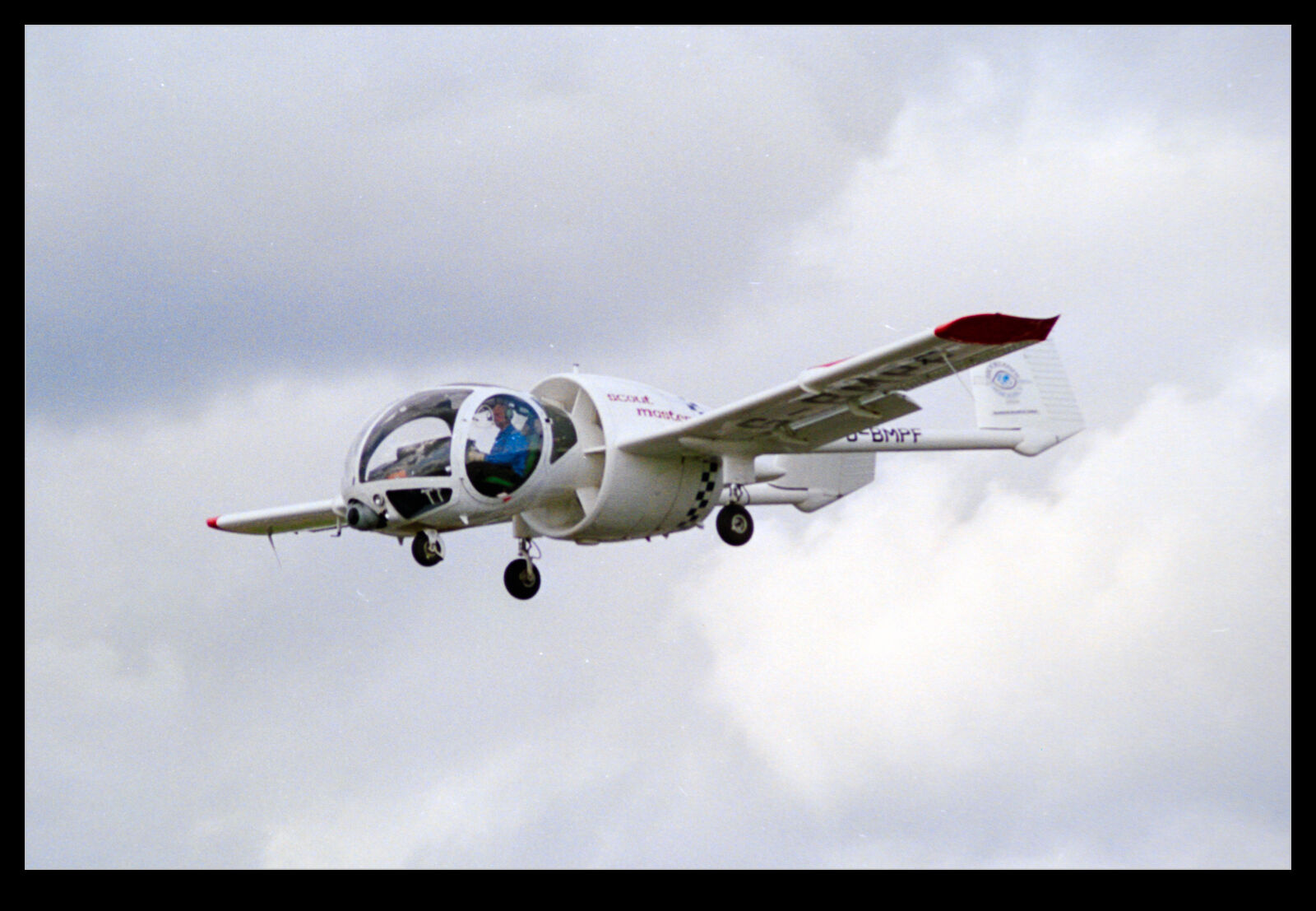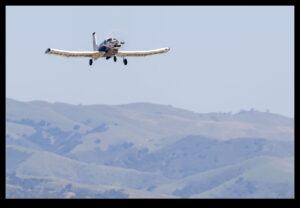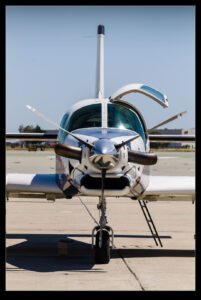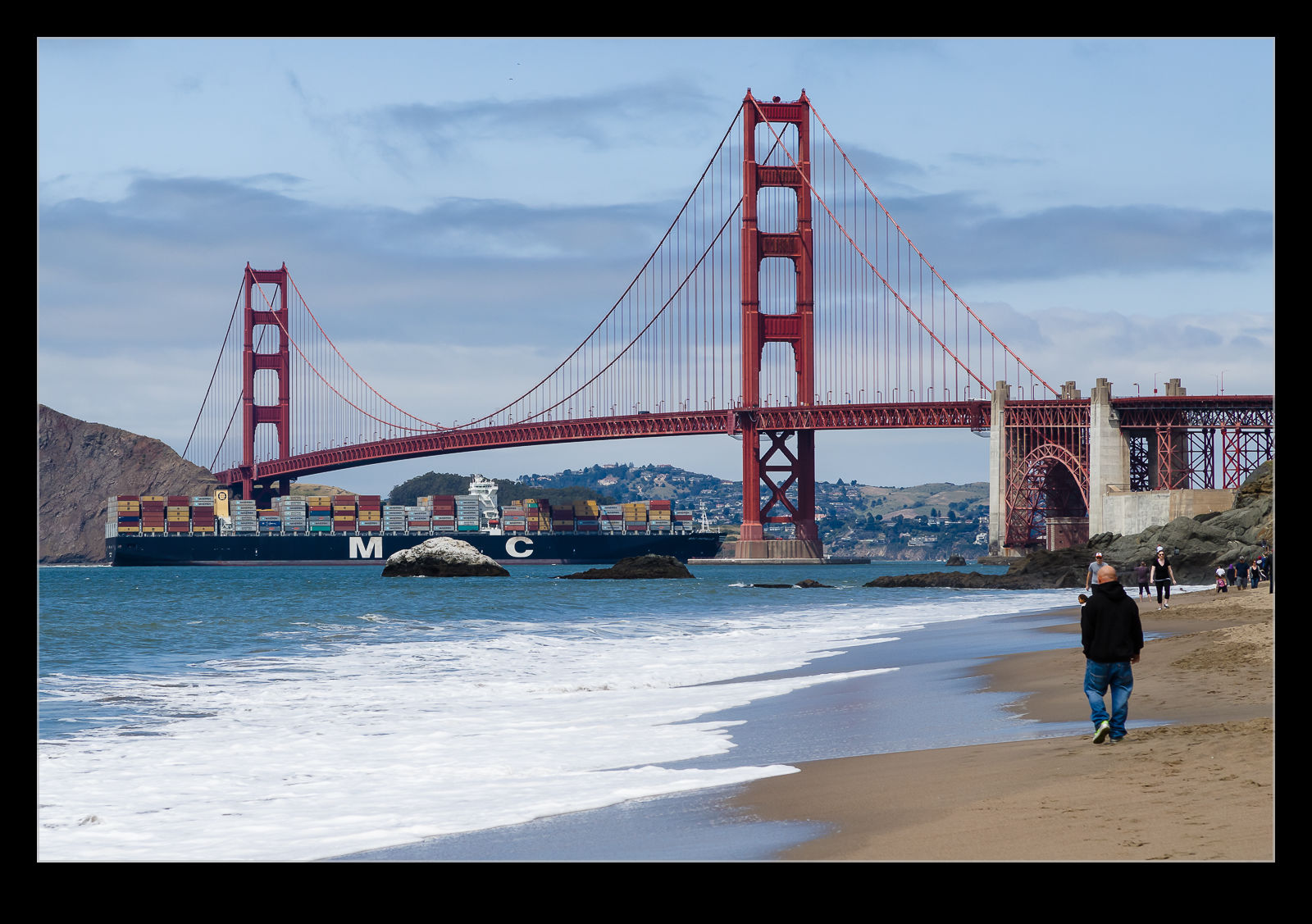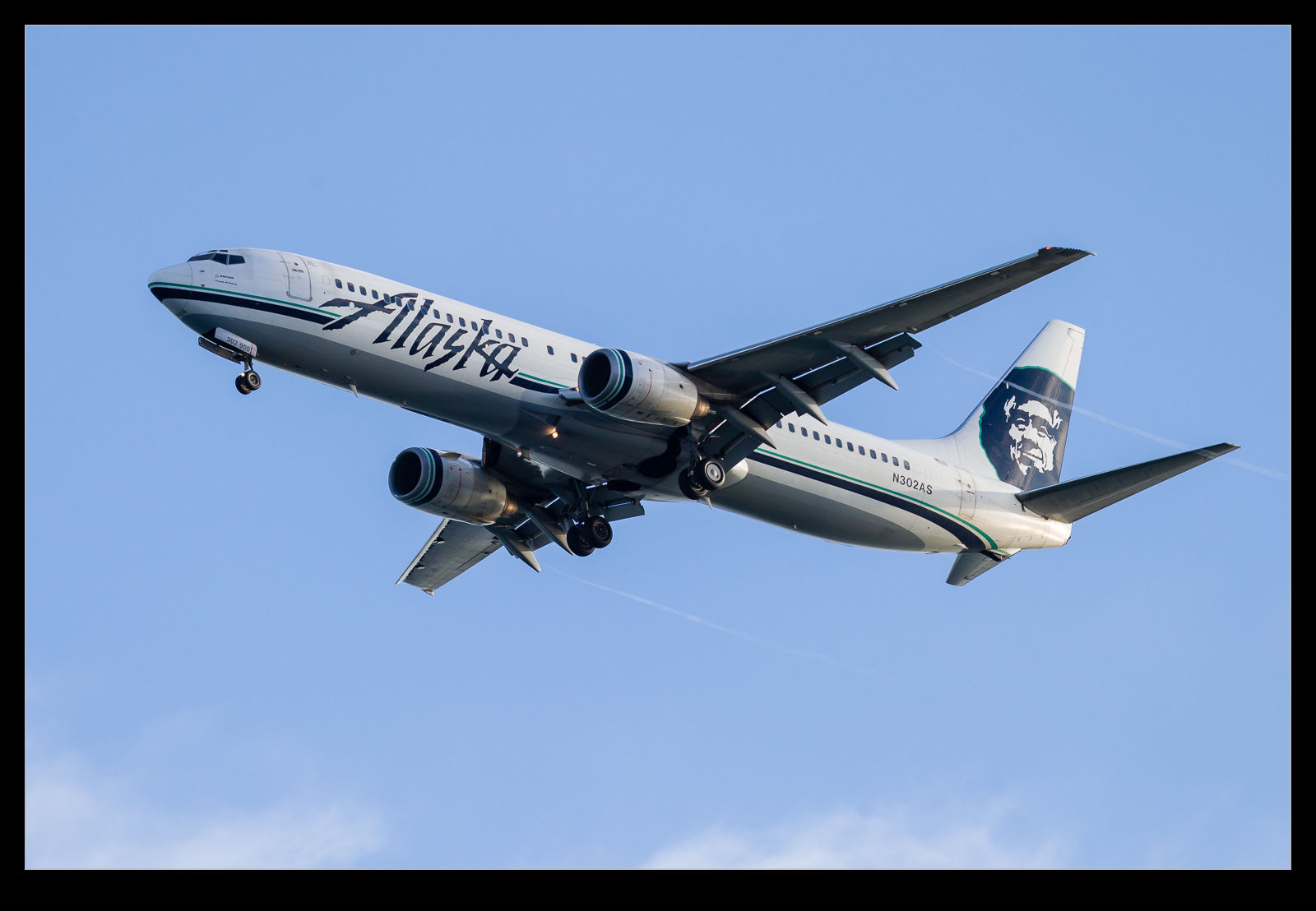 There is not a huge amount of variation in airliners these days so coming across something a little different is usually a moment of interest. While the name Alaska Airlines might suggest an airline focused on Alaska, it is actually headquartered in Seattle and seems to have a wide range of operations all across the west coast. Consequently, we see a lot of them in both Oakland and SFO. They have a large fleet of 737-800s and 737-900ERs and both types have been retrofitted with the APB Scimitar winglets. Apparently, not all of them though. This example I saw coming by Coyote Point and it not only doesn’t have Scimitars, it doesn’t have winglets at all. A rare beast these days.
There is not a huge amount of variation in airliners these days so coming across something a little different is usually a moment of interest. While the name Alaska Airlines might suggest an airline focused on Alaska, it is actually headquartered in Seattle and seems to have a wide range of operations all across the west coast. Consequently, we see a lot of them in both Oakland and SFO. They have a large fleet of 737-800s and 737-900ERs and both types have been retrofitted with the APB Scimitar winglets. Apparently, not all of them though. This example I saw coming by Coyote Point and it not only doesn’t have Scimitars, it doesn’t have winglets at all. A rare beast these days.
Monthly Archives: May 2016
Whale Watching Tour
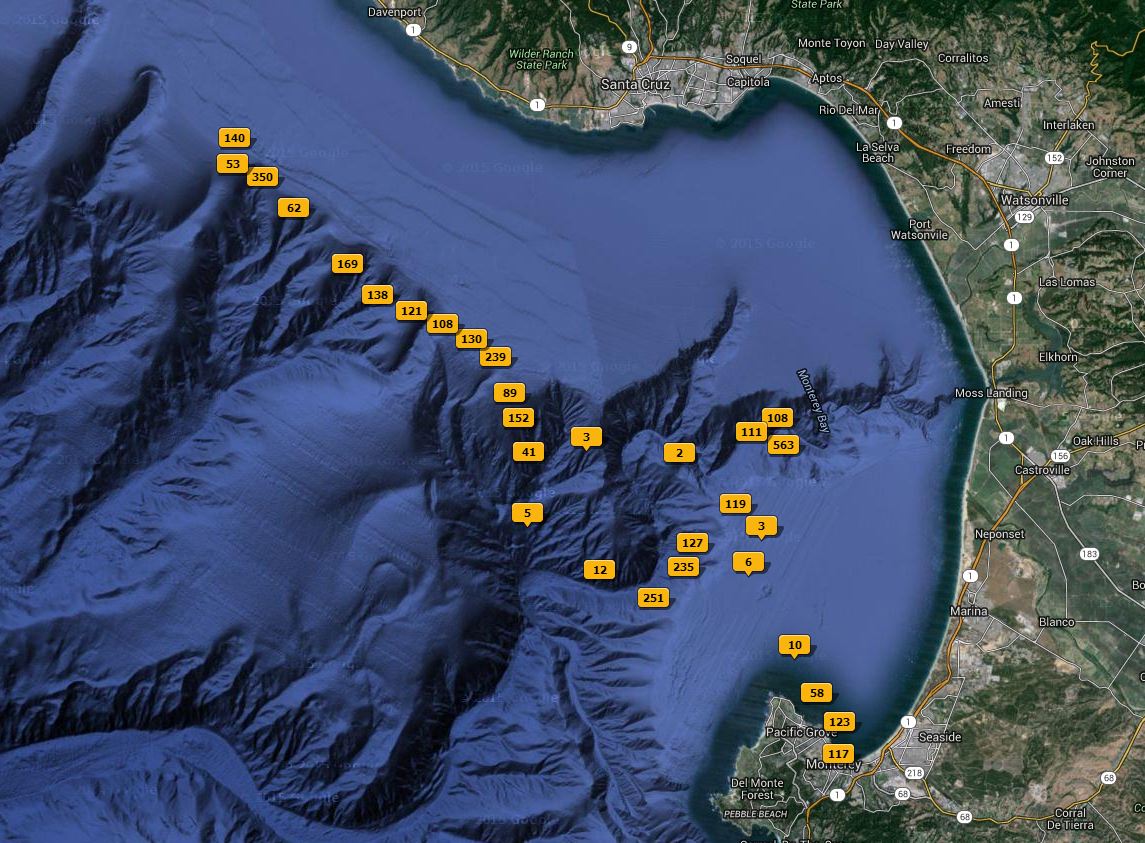 I have been on a few whale watching trips in the past. We took one out of Provincetown on Cape Cod that had a whale guarantee. No whales and you get a free second trip. 95% success rate. Guess what day we went on. No chance to go back and take the free trip. We did a trip in a RIB when staying on Pender Island and had more success on that occasion including a pretty close encounter with a humpback. Other than that it was a pretty quiet trip.
I have been on a few whale watching trips in the past. We took one out of Provincetown on Cape Cod that had a whale guarantee. No whales and you get a free second trip. 95% success rate. Guess what day we went on. No chance to go back and take the free trip. We did a trip in a RIB when staying on Pender Island and had more success on that occasion including a pretty close encounter with a humpback. Other than that it was a pretty quiet trip.
Consequently, I was cautious when we went on our trip out in Monterey Bay. This is an area with an abundance of marine life, particularly at this time of year. Dolphins, humpbacks, orcas and even blue whales have been about a lot recently. However, we went on a trip that had a lot better chances. It was an all day excursion. It was listed as eight hours but we ended up being gone for eleven. The map above shows where I took shots so you can see we went a long way up the coast. It is easy to see why they don’t let children under 13 or pregnant women on. Boredom or urgent needs are not realistic!
The day was very productive. Be ready for a stream of posts of aquatic wildlife!
Optica Flashback
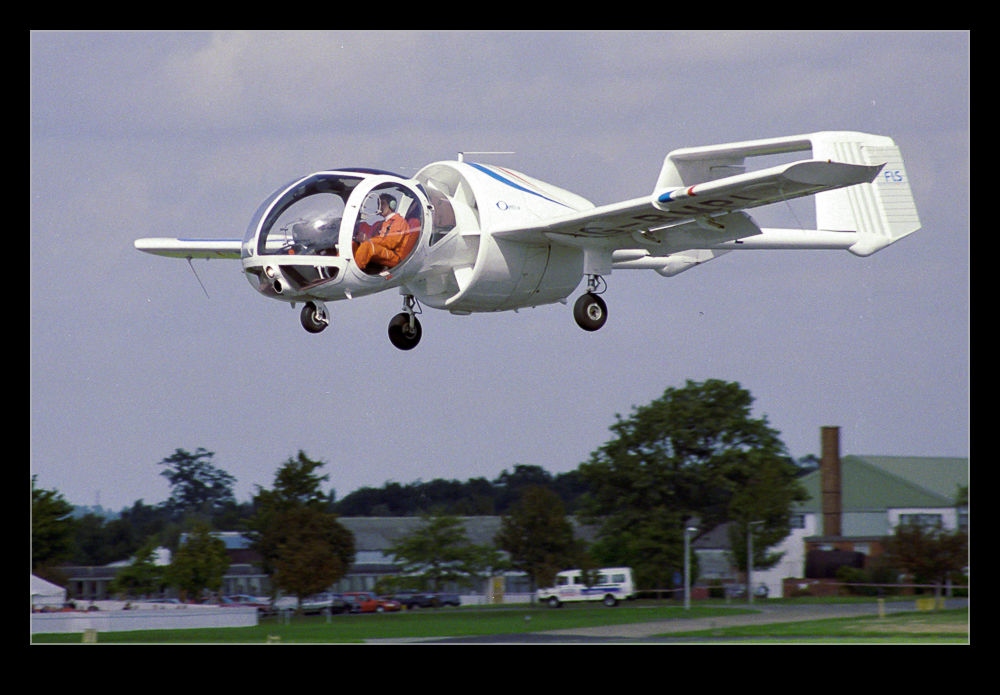 A few outlets have recently been covering the reemergence of the Edgley Optica. In the 80s, his was an aircraft that was coming in to production. Designed as an observation platform, it is a rather interesting looking airframe. A bulbous fuselage sits ahead of the wing and the powerplant is mounted in the rear driving a ducted fan. The unrestricted view is supposed to make the aircraft ideal for seeing what is going on below. Supposedly, the ducted fan makes for a low noise signature which helps the “stealthiness” of the aircraft.
A few outlets have recently been covering the reemergence of the Edgley Optica. In the 80s, his was an aircraft that was coming in to production. Designed as an observation platform, it is a rather interesting looking airframe. A bulbous fuselage sits ahead of the wing and the powerplant is mounted in the rear driving a ducted fan. The unrestricted view is supposed to make the aircraft ideal for seeing what is going on below. Supposedly, the ducted fan makes for a low noise signature which helps the “stealthiness” of the aircraft.
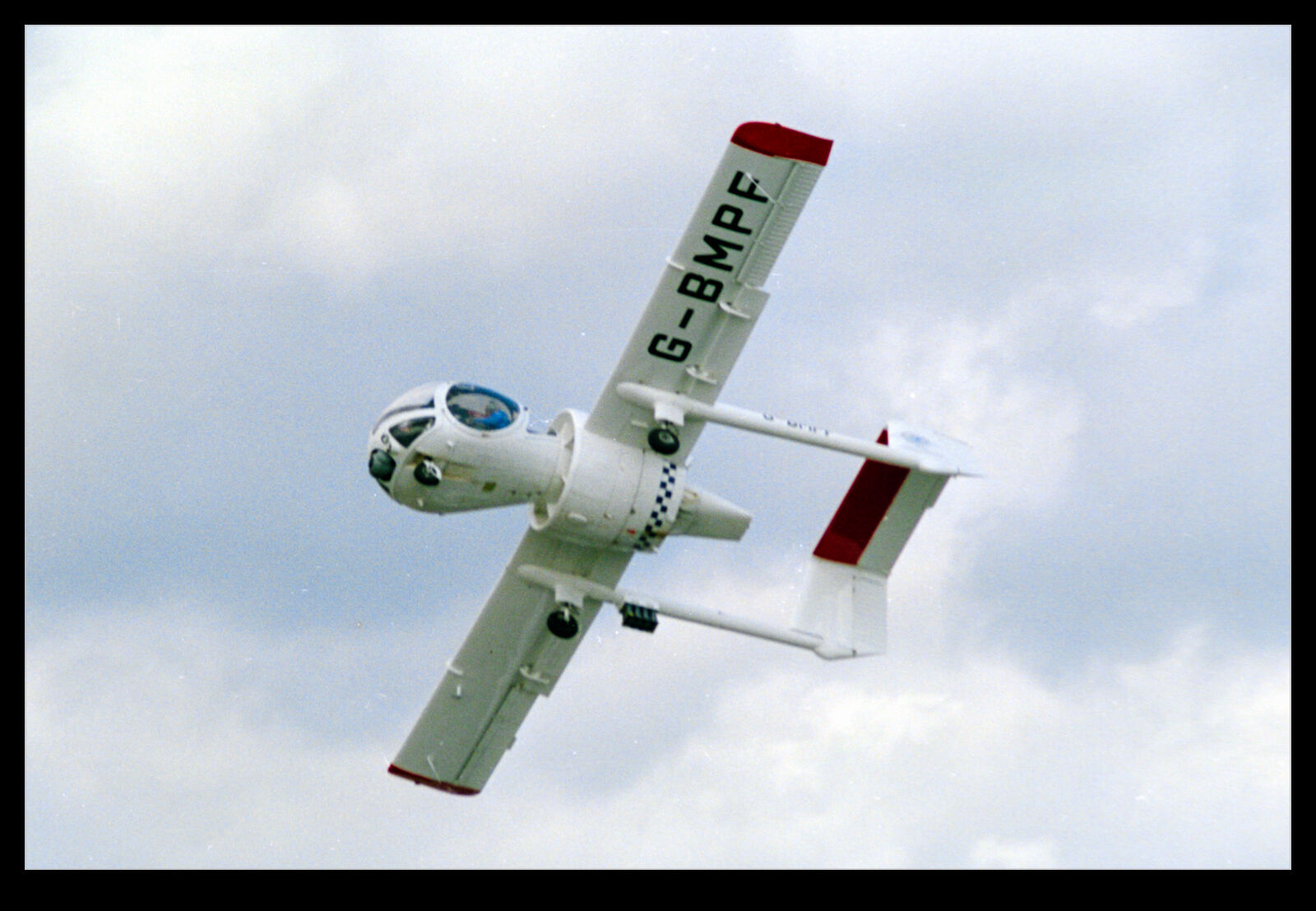 The ownership of the design moved through a few entities and the program experienced some setbacks including a crash and a fire that destroyed a number of in production aircraft. Ultimately, the whole thing sputtered to a stop. A few airframes are still in use around the world but John Edgley, the original designer, has bought back the rights and is now trying to relaunch the project. I saw the aircraft at Farnborough back at the end of the 80s and beginning of the 90s. These shots were taken then. I really would quite like to track down some of the currently active airframes.
The ownership of the design moved through a few entities and the program experienced some setbacks including a crash and a fire that destroyed a number of in production aircraft. Ultimately, the whole thing sputtered to a stop. A few airframes are still in use around the world but John Edgley, the original designer, has bought back the rights and is now trying to relaunch the project. I saw the aircraft at Farnborough back at the end of the 80s and beginning of the 90s. These shots were taken then. I really would quite like to track down some of the currently active airframes.
Reflections on the Ocean
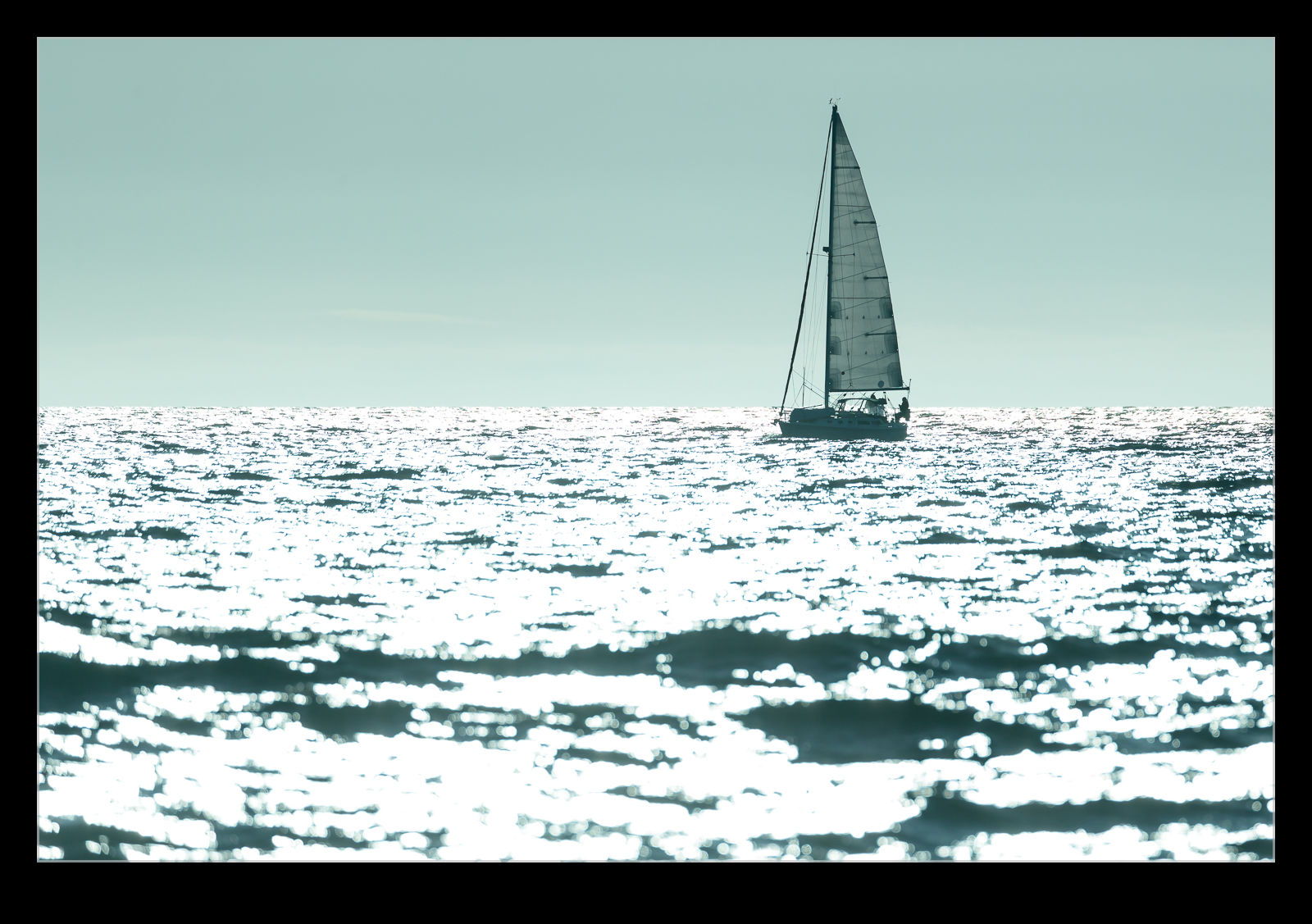 I’m sure this will look very formulaic to a number of photographers but, for the longest time, I have loved the image of a lone boat in the open sea. I think the first time I took a shot like this was on the Ribble Estuary in Lytham. That was on film of course. Now, even when I know it is not being terribly original, I can’t help myself but be drawn to an image like this. Maybe one day I will have the perfect shot but I doubt it.
I’m sure this will look very formulaic to a number of photographers but, for the longest time, I have loved the image of a lone boat in the open sea. I think the first time I took a shot like this was on the Ribble Estuary in Lytham. That was on film of course. Now, even when I know it is not being terribly original, I can’t help myself but be drawn to an image like this. Maybe one day I will have the perfect shot but I doubt it.
The way the light bounces from the water, the shadow that the boat is in, the texture of the waves and the isolation of the boat in the expanse of the water all appeal to me. Hope you like it too.
Night Loading the Ruslan
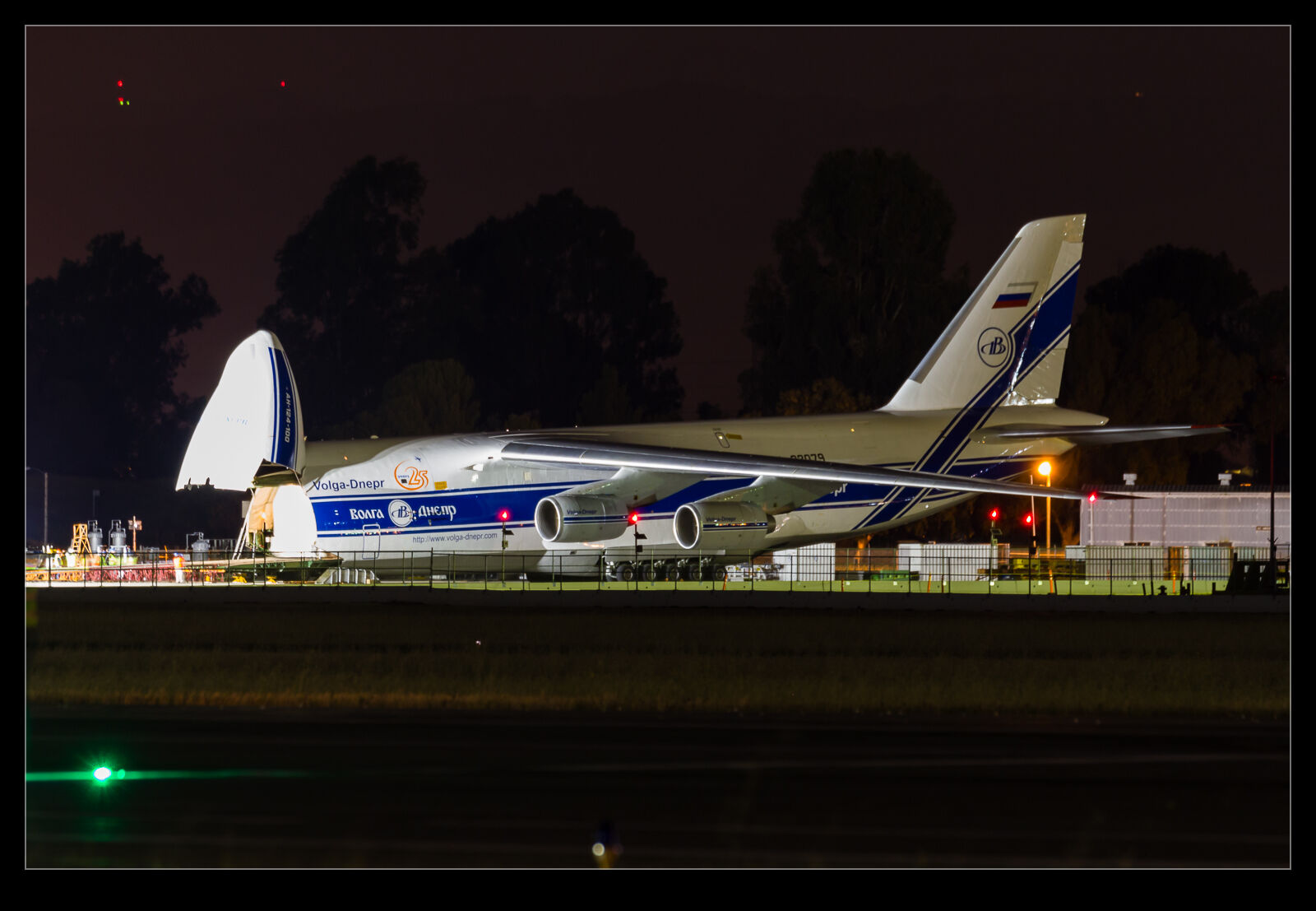 Waiting on the ramp at Moffett Field for Solar Impulse, over on the other side of the field we could see another visitor. An Antonov AN124 Ruslan was parked up with its nosed raised in the process of loading a payload. It looked a bit like a satellite container and, given the proximity of two satellite manufacturers, that wouldn’t be improbable. It was a long way off but I had some time to try and get a shot and this was what I got.
Waiting on the ramp at Moffett Field for Solar Impulse, over on the other side of the field we could see another visitor. An Antonov AN124 Ruslan was parked up with its nosed raised in the process of loading a payload. It looked a bit like a satellite container and, given the proximity of two satellite manufacturers, that wouldn’t be improbable. It was a long way off but I had some time to try and get a shot and this was what I got.
Fishing the Surf
 At the end of Baker Beach there are some rocks. One guy had set himself up here to do a bit of fishing. He knew exactly where the waves would crash over and where they would miss – unlike some of the other people clambering across the rocks. The image of him alone with the sea seemed rather compelling to me – certainly more so than the view in the opposite direction of a naked guy on the beach applying sunblock!
At the end of Baker Beach there are some rocks. One guy had set himself up here to do a bit of fishing. He knew exactly where the waves would crash over and where they would miss – unlike some of the other people clambering across the rocks. The image of him alone with the sea seemed rather compelling to me – certainly more so than the view in the opposite direction of a naked guy on the beach applying sunblock!
Pacific Aerospace P-750
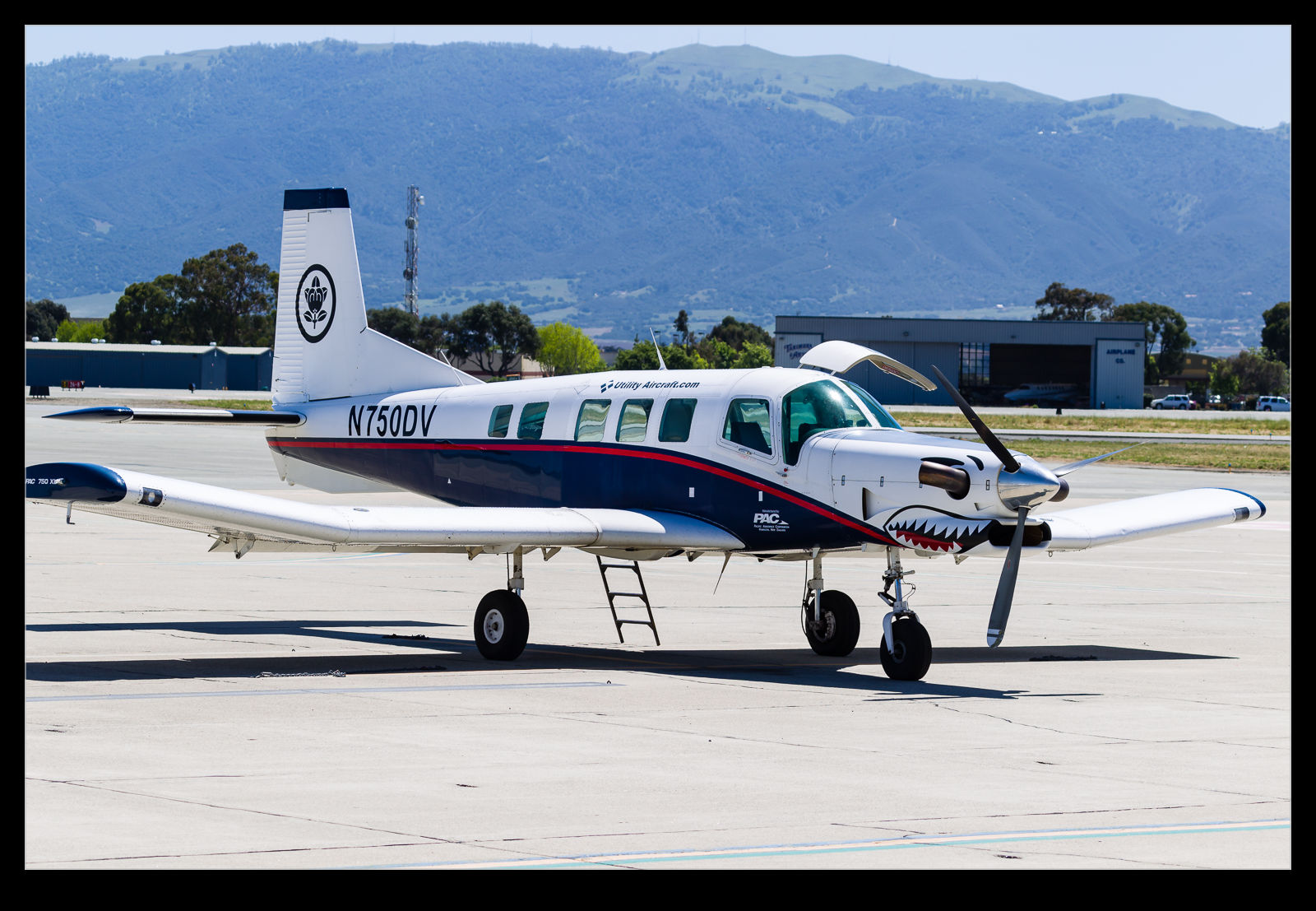 An oft quoted idiom in aviation is that if it looks right it flies right. I’m not sure whether that was deep in the minds of Pacific Aerospace Ltd when they designed the P-750 or not but this is an aircraft that is functional and useful but I doubt too many people will consider it pretty. It is a workhorse. Some sections of fuselage which minimize the use of double curvatures to make production simpler and cheaper. Add to that the reliable PT-6 seemingly bolted on the nose and a wing with a thick section and some simple dihedral at the tips and you have a plane. If you want to take a decent load of skydivers up to altitude quickly and get back down just as quickly for the next load, this is your sort of plane.
An oft quoted idiom in aviation is that if it looks right it flies right. I’m not sure whether that was deep in the minds of Pacific Aerospace Ltd when they designed the P-750 or not but this is an aircraft that is functional and useful but I doubt too many people will consider it pretty. It is a workhorse. Some sections of fuselage which minimize the use of double curvatures to make production simpler and cheaper. Add to that the reliable PT-6 seemingly bolted on the nose and a wing with a thick section and some simple dihedral at the tips and you have a plane. If you want to take a decent load of skydivers up to altitude quickly and get back down just as quickly for the next load, this is your sort of plane.
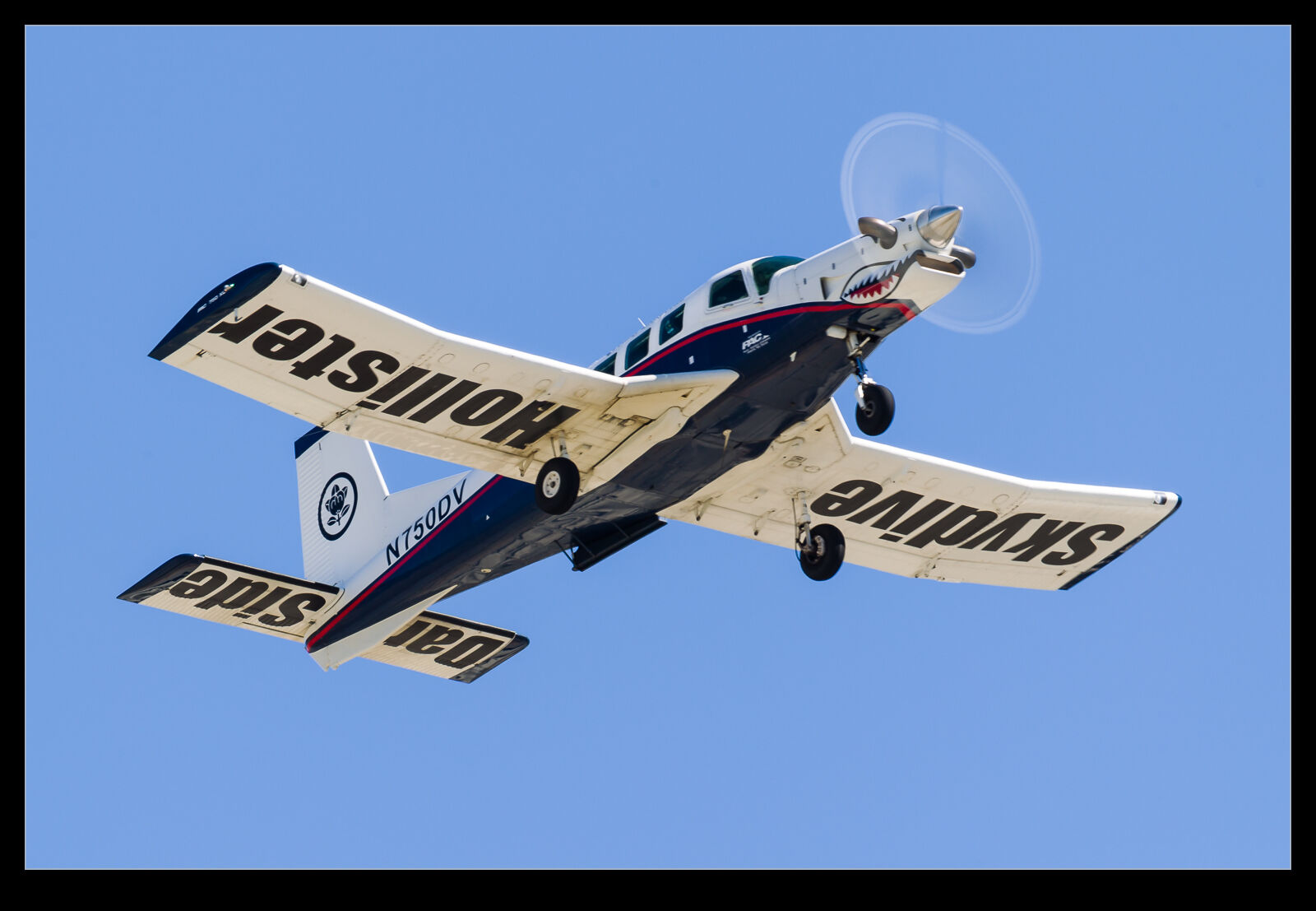 This example showed up at Salinas while I was there. It parked on the ramp for a while before heading back off. It has a rear door suited to skydiving and the name on the bottom suggests that is what it does. I first saw one of these at East Troy in Wisconsin where it was also carrying skydivers. The diving approaches both examples used show just how quickly this plan can get back on the ground. The first time you see it, you may think something is wrong but it is just the most efficient way to get to the next paying customers.
This example showed up at Salinas while I was there. It parked on the ramp for a while before heading back off. It has a rear door suited to skydiving and the name on the bottom suggests that is what it does. I first saw one of these at East Troy in Wisconsin where it was also carrying skydivers. The diving approaches both examples used show just how quickly this plan can get back on the ground. The first time you see it, you may think something is wrong but it is just the most efficient way to get to the next paying customers.
1DX Mk II First Impressions
After a little bit of time shooting with the 1DX MkII, I have started to build my impressions of how it is working for me. This is definitely only a first impressions review since there will be a lot of time before I have got totally used to it and have worked out the details of its functionality. For reference, I have previously been shooting with the 1D MkIV so things have moved on a lot from that.
Focus is a good place to start. I didn’t have a particular problem with the MkIV but this one does seem to be a bit snappier when it comes to focus. I was recently shooting some subjects which had a lot of scope for the focus to get confused. However, it seemed to be reliably on target – certainly far more than I used to experience. There are a multitude of focus points and combinations. I haven’t even started to get into them yet. I tend to have simple requirements of the focus points, generally based around the center point but I will be trying more in due course.
Exposure has thrown up a couple of things of note so far. First is the amount of light you get with a full frame sensor. I have read a few things about the way camera manufacturers reference ISO and aperture combinations with crop bodies but I hadn’t had a chance to explore this. Using the same ISO and aperture as I used to, I am getting shutter speeds noticeably higher than before. I will now revisit what my settings are since I don’t need speeds that high. The other change is in the handling of backlight. I had got a good grip on what exposure compensation I needed for various sky conditions with the previous body. Starting with those resulted in overexposure. I find the body is better able to get it right itself so I have been tweaking the exposure comp down.
Video capabilities have been significantly expanded but I have yet to get too far into them. I started out with the default HD settings but I have changed to a larger file size format to get more latitude for editing. Having not done any detailed editing yet, I have not found out how much of a difference this makes. I have not played with 4K at all yet. The big thing in video is the dual pixel autofocus. Previously I had to fix focus before the shot started and any zooming would tend to move things out of focus. Now I can select by touch what I want to track and the camera seems to do a nice job of keeping that sharp during motion, panning or zooming. This is a nice addition to have when dealing with motion relatively close in.
The setup of the control buttons is an evolution of what I know. There are some additional buttons to work with and they are configurable. I haven’t tried reassigning anything yet since I want to find out what I need most often before I do so. They have made a switch in the stills to video control with that now having its own control. I am still getting used to it compared to the way I did it on the MkIV but I firmly believe the new configuration will be a big improvement. I just need to retrain myself to use it without thinking.
Preset configurations are a great addition. I moaned about this to a Canon rep many years ago. The 40D had preset configurations you could program and switch between quickly. When shooting props and jets, this is a nice thing to be able to do very quickly. Everything about the setup is programmed so it is a powerful addition. Finally I have it on a better body. There are three presets. I have one for jets, one for props and the third I have configured so I can give the camera to someone else to shoot without having to explain back button focus and center points. It is in a more user friendly configuration to hand off. I shall see whether that gets much use or not.
The card configuration is now CFast in one slot and Compact Flash in the other. The camera came with a 64Gb CFast card and I have put existing 64Gb CF in the other slot. So far I have not had to use the CF so I haven’t noticed the write speed. Buffer is huge so I doubt this will be an issue. The CFast is working fine. It does seem to download very quickly via the USB3 card reader that was also included. The card does also get noticeably warm when working a lot. No specific upside or downside so far. The CFast is required for 4K at 60fps but otherwise CF will work fine.
Now for one of the big surprises. Canon has upped the frame rate to 14fps. It was 12fps on the 1DX and 10fps on my old MkIV. I did not think that this would be a big deal. A small increase? I was wrong. This thing flies along. A quick squeeze of the shutter and suddenly I have three shots. It buzzes rather than has the sound of individual actuations. This means a slight variation of shooting technique for me. I used to shoot short bursts for each view. I could then pick my favorite of the burst during post processing. I can still do this but now it is a shorter hold of the button to get the same effect.
A small addition I like is the built in GPS. I have been using an app on my phone to create a gpx file tracklog during photo shoots. I can then import this in Lightroom and it matches with the shot times to tag the images. With a built in GPS, the shots are automatically tagged. This will help when flying which often meant I couldn’t get the tracklog to work in the old process. As a aside, the GPS allows the camera time to automatically update so no need to plug them in periodically to get the time synced up.
I can’t overlook the fact that the 1DX MkII is a full frame camera. I was a little concerned about losing the crop factor I had on the MkIV. Shooting aircraft sometimes makes the extra reach of the crop factor helpful. The pixel density is a little below what it was before so I don’t have the virtual crop to play with. However, so far I am finding that I am just shooting like normal based on what I see in the viewfinder. We shall see if I notice the difference as I get to do a variety of shoots.
File size is a step up as a result of the higher pixel count. This is resulting in a bit more effort for the computer when it is rendering the shots. I can see a noticeable difference in the speed with which the 1:1 renderings get completed. This is not yet causing a problem but I shall see whether a bottleneck develops. I will also see how this impacts my backups. I previously used to back up files in blocks of 1,000 per Blu-ray disc. If there were no video or large edit files, the disc would have spare capacity. Currently, it looks like I might still be able to do the same thing but with less margin. Another thing to watch as experience is gained.
Battery life is officially down on the previous camera. The increased processing power requires more juice from the batteries. I have been on a couple of big shoots on consecutive days with many thousands of shots over the days without having gone through one battery. If there is a reduction, it is certainly not causing me any operational concerns.
That summarizes everything I have identified so far. I have a long way to go in learning to make good use of the camera but I have to say I am very happy with it so far. It is a great piece of kit. I have much to still try. I have not even got in to the high ISO capabilities at this point. This is something I want to play with before too long. Longer days will make that a bit trickier but the opportunity will present itself. When I do, anticipate a post on that too! Overall, I love it. Anyone want to buy a MkIV?
The Camera Might See But Autofocus Doesn’t
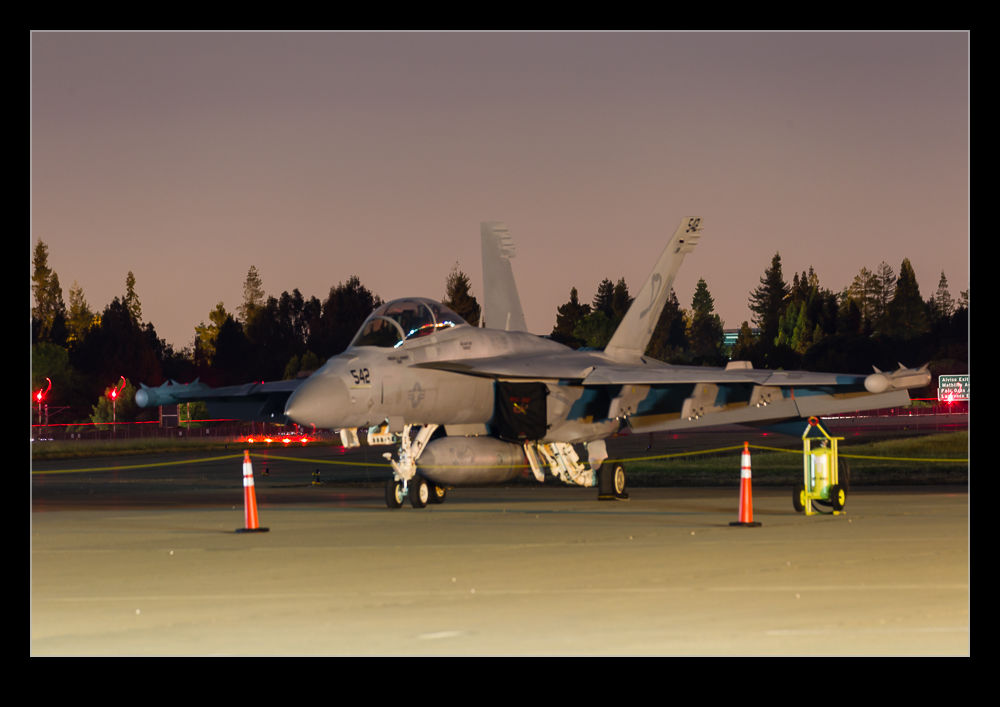 And I could barely see much myself! We were on the ramp at Moffett Field for the arrival of Solar Impulse. There was some time to wait while we were out there. As I looked around, I thought I could see something parked further down the ramp. There was very little light but there appeared to be some aircraft. I figured it was worth a look given that I had a tripod.
And I could barely see much myself! We were on the ramp at Moffett Field for the arrival of Solar Impulse. There was some time to wait while we were out there. As I looked around, I thought I could see something parked further down the ramp. There was very little light but there appeared to be some aircraft. I figured it was worth a look given that I had a tripod.
In the days of film shooting, I couldn’t trust the camera metering for long exposures. Reciprocity failure was part of the issue but the cameras were a lot less advanced in those days. In this case I trusted the camera for the first shot and it worked out really well. Sadly, there was nothing to focus on so I made my best forts at focusing on what was visible and it was some background lights. Sadly, they were too far away to get focus on the aircraft. The sensor was able to gather the feeble light without any problem though.
It turns out that there was a pair of Navy E/A-18G Growlers sitting on the ramp. Leave the camera to it and you get a reasonable exposure. When I saw the shot appear on the screen, I was quite amazed. I was looking at the jets and I could barely make anything out. The camera was able to see the whole thing – just out of focus based on my inability to focus it properly.
Baker Beach
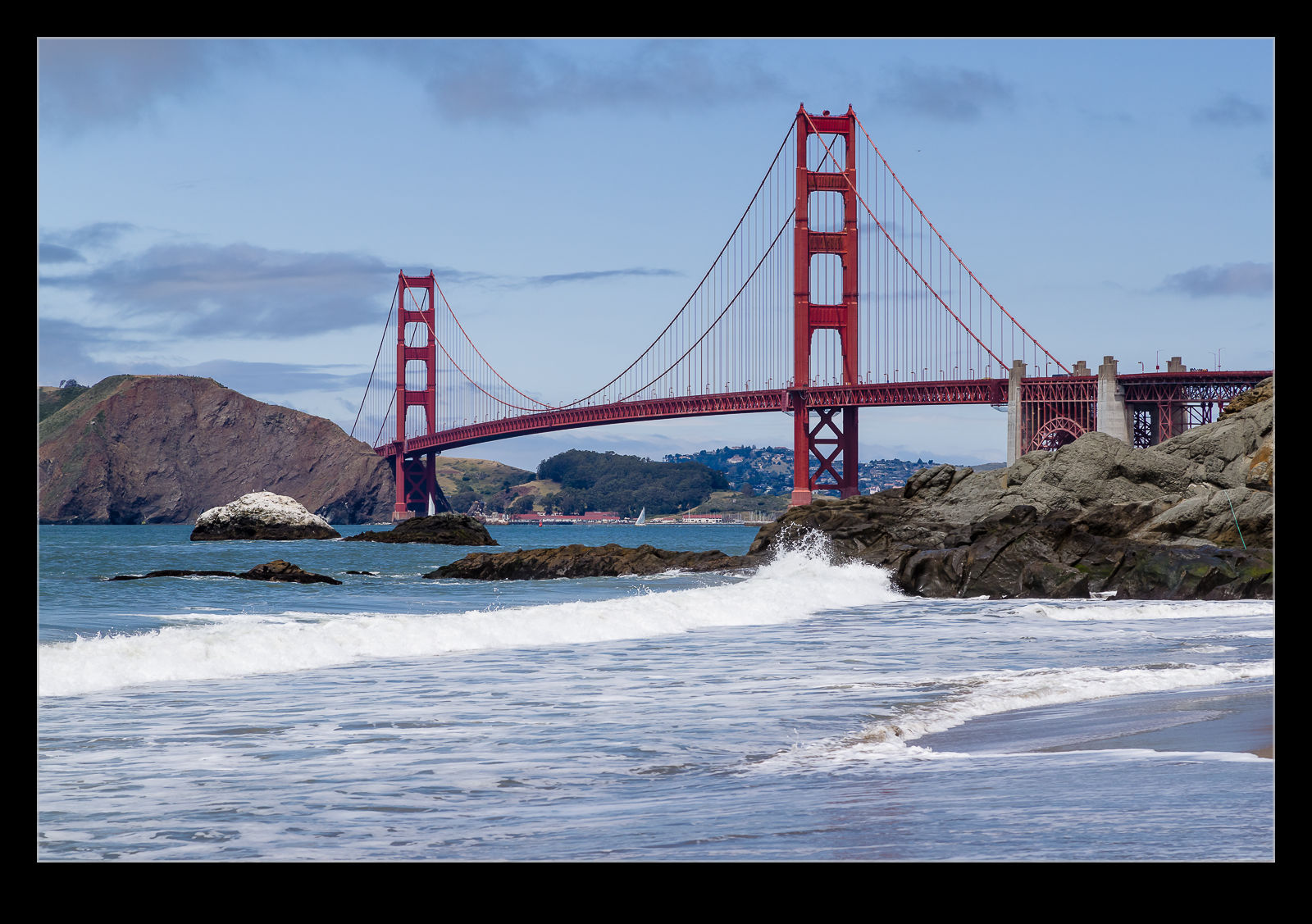 The Bay Area is not short of photogenic locations. Probably the most famous is the Golden Gate Bridge. I have certainly photographed it many times from different places. One that I have not shot from before, though, is Baker Beach. Located on the outside of bridge on the south shore, it provides a nice angle on things. I had seen plenty of shots from there before but my previous effort at visiting had occurred on a day when visibility on the shore was just good enough to see your hand in front of your face.
The Bay Area is not short of photogenic locations. Probably the most famous is the Golden Gate Bridge. I have certainly photographed it many times from different places. One that I have not shot from before, though, is Baker Beach. Located on the outside of bridge on the south shore, it provides a nice angle on things. I had seen plenty of shots from there before but my previous effort at visiting had occurred on a day when visibility on the shore was just good enough to see your hand in front of your face.
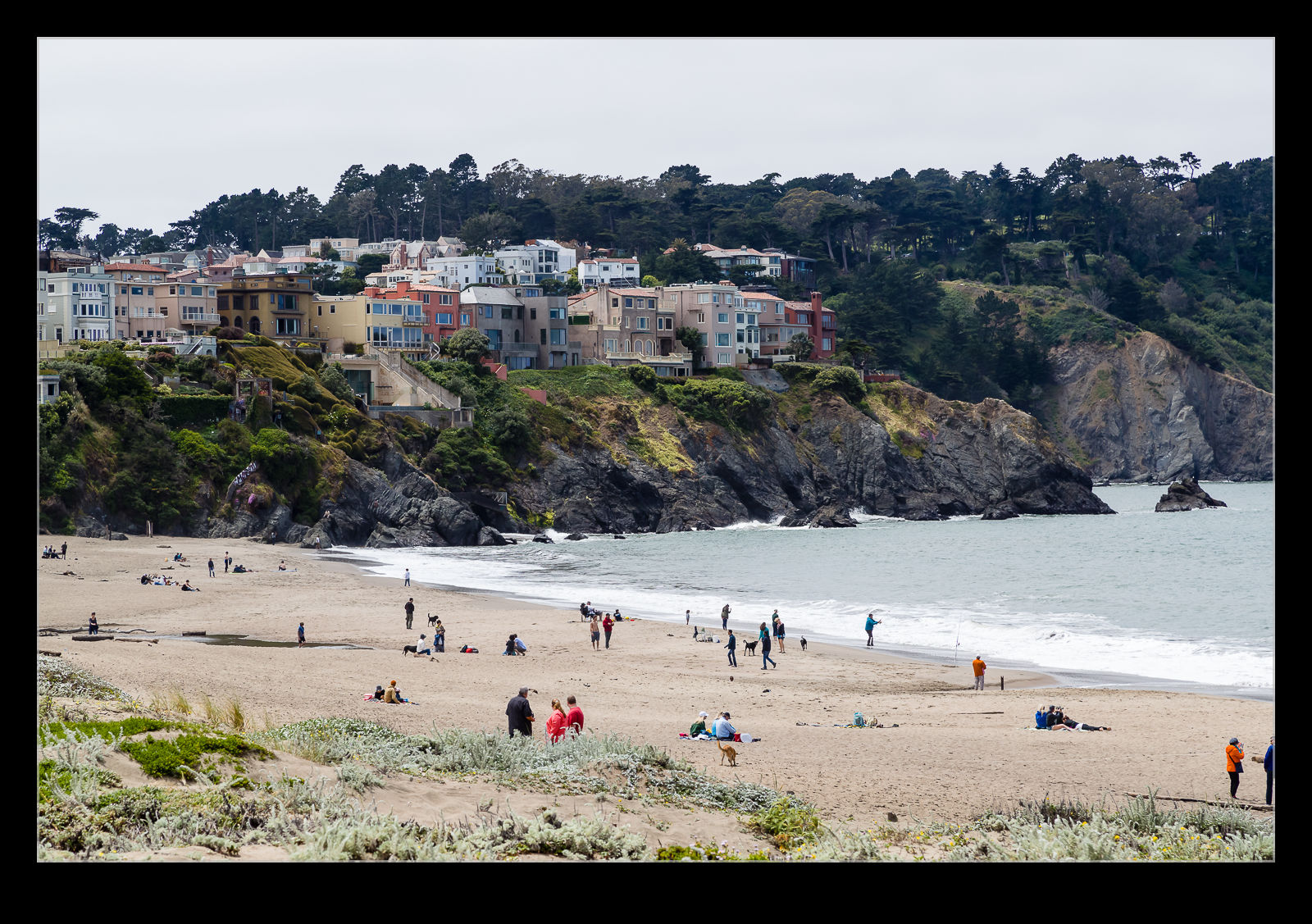 Nancy and I decided to check it out as a fall back when something else we had planned proved to be so busy we couldn’t find anywhere to park. We headed to the beach and strolled along the sand avoiding (most of the time) the waves rolling up on the shore. The view of the bridge was much as expected. As we wandered around, a number of container ships came into view heading for the bay. I was curious to see just how large they looked when compared to the bridge. We loitered until one of them went under the bridge. It suddenly looked a lot less impressive, even though it reached a good distance towards the bridge deck.
Nancy and I decided to check it out as a fall back when something else we had planned proved to be so busy we couldn’t find anywhere to park. We headed to the beach and strolled along the sand avoiding (most of the time) the waves rolling up on the shore. The view of the bridge was much as expected. As we wandered around, a number of container ships came into view heading for the bay. I was curious to see just how large they looked when compared to the bridge. We loitered until one of them went under the bridge. It suddenly looked a lot less impressive, even though it reached a good distance towards the bridge deck.
